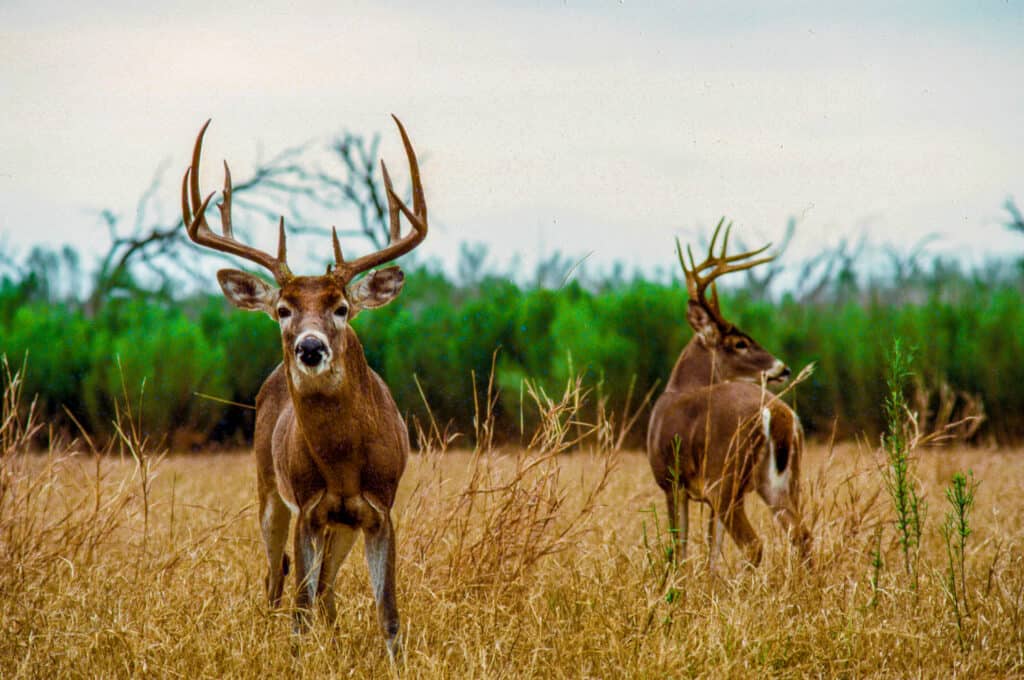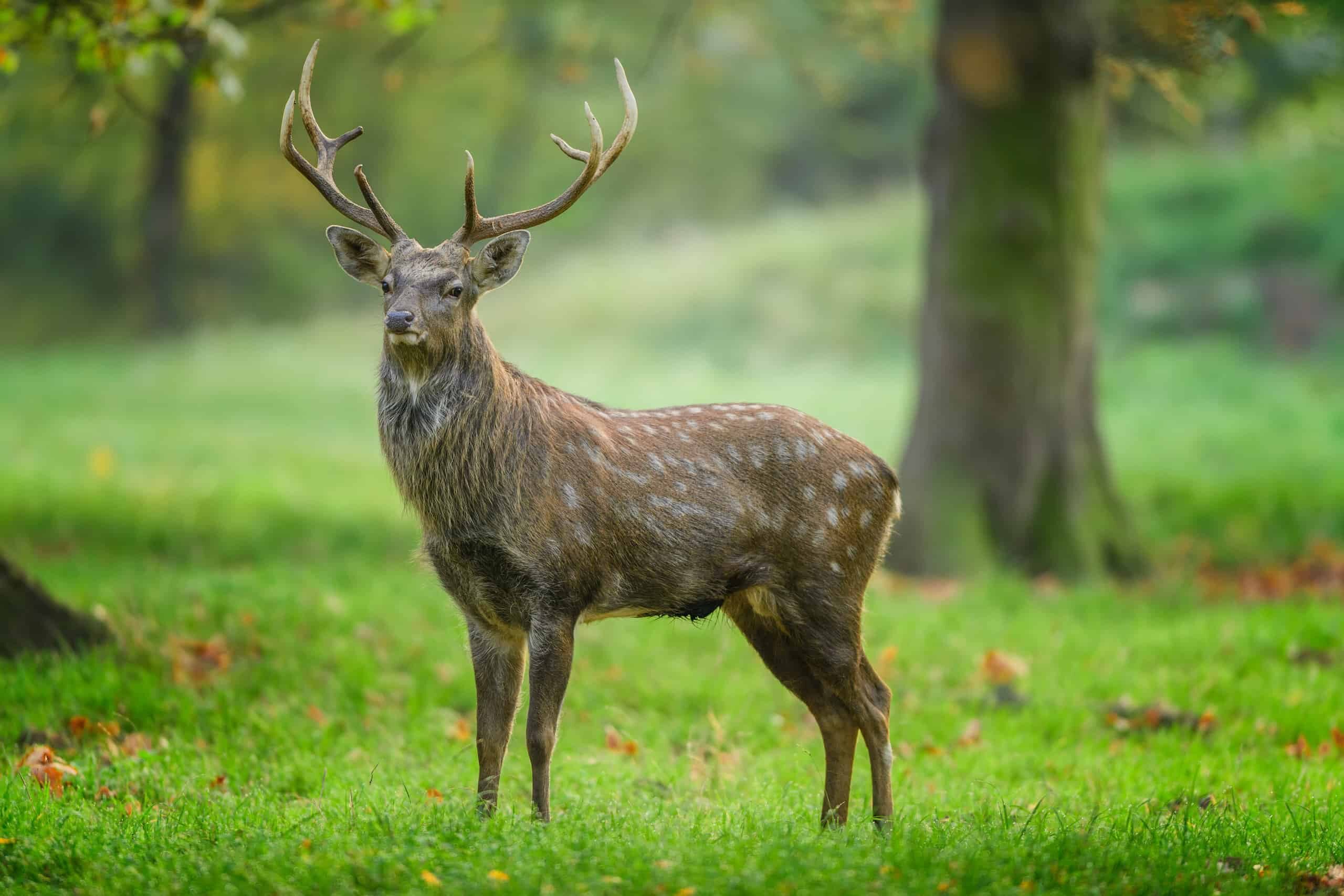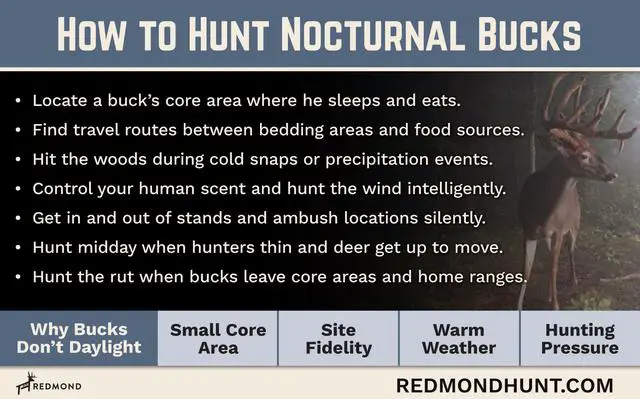“Unraveling the Mystery: Shedding Light on Deer’s Nocturnal Habits”
1. Understanding Deer Behavior: Are They Nocturnal or Diurnal?

Deer behavior is a fascinating subject for hunters and wildlife enthusiasts alike. One of the most common questions asked about deer is whether they are nocturnal or diurnal animals. The truth is that deer can exhibit both diurnal and nocturnal behavior, depending on various factors such as food availability, predation risk, and human disturbance.
Nocturnal Behavior:
During certain times of the year, especially during hunting season or in areas with high human activity, deer may become more active at night and display predominantly nocturnal behavior. This shift in behavior is often triggered by the increased presence of humans in their habitat, which makes them more cautious and wary during daylight hours.
Nocturnal deer tend to feed, travel, and engage in other activities under the cover of darkness when they feel safer from potential threats. They have excellent night vision and rely on their acute senses to detect any signs of danger while foraging for food or moving through their territory.
However, it’s important to note that not all deer become completely nocturnal. Some individuals may still be active during dawn or dusk hours, which are known as crepuscular periods.
Diurnal Behavior:
In areas with less human disturbance and lower predation risk, deer are more likely to display diurnal behavior patterns. This means that they are active primarily during daylight hours, particularly around sunrise and sunset.
During these times, known as the “golden hours,” deer are often seen grazing in open fields or meadows where they can easily spot predators approaching from a distance. They use their keen eyesight and hearing abilities to stay alert while feeding on grasses, leaves, fruits, and other vegetation.
It’s worth mentioning that even though deer may be diurnal in certain areas or seasons, they still possess some level of nocturnal behavior. They may take short naps or rest during the day, especially in shaded areas or dense vegetation, to conserve energy and avoid overheating.
Understanding the factors that influence deer behavior and their activity patterns can greatly enhance your chances of spotting and hunting them. By studying their habits, scouting their movement times, and adapting your hunting strategies accordingly, you can increase your success in targeting both diurnal and nocturnal deer.
2. Unveiling the Mystery: When are Deer Most Active?

Deer, particularly white-tailed deer, are known for their crepuscular behavior, which means they are most active during dawn and dusk. During these times, the lighting conditions provide them with an advantage as they have adapted to low-light environments. This allows them to navigate their surroundings more effectively while minimizing their exposure to potential predators.
Factors Influencing Deer Activity
Several factors influence deer activity patterns throughout the day. One of the primary factors is food availability. Deer are herbivores and spend a significant amount of time foraging for food. They tend to be most active during periods when their preferred food sources are abundant and easily accessible.
Another factor that affects deer activity is weather conditions. Extreme temperatures or inclement weather can limit their movement and force them to seek shelter during the day. Additionally, hunting pressure can also influence deer behavior, causing them to become more nocturnal in areas with high human activity.
Deer Movement Times Explained
Understanding deer movement times is crucial for hunters and wildlife enthusiasts alike. As mentioned earlier, deer are most active during dawn and dusk, which are commonly referred to as the “golden hours.” During these periods, visibility is reduced due to low light conditions, making it easier for deer to move undetected.
In the morning, deer typically start moving around 30 minutes before sunrise as they search for food after a night of rest. This early morning activity continues until a few hours after sunrise when they find a suitable spot to bed down and rest during the day.
In the evening, deer become active again around two hours before sunset as they prepare for another night of feeding. They continue moving until it becomes too dark for them to see effectively.
Tactics for Hunting Nocturnal Bucks
Hunting nocturnal bucks can be challenging, but there are tactics that can increase your chances of success. One approach is to scout the area during the day to identify bedding areas and travel routes. This allows you to understand their movement patterns and plan your hunting strategy accordingly.
Another tactic is to hunt near food sources such as crop fields or oak stands, which are known to attract deer during their feeding times. Setting up trail cameras can also provide valuable insights into deer activity, helping you determine the best times to be in the field.
In conclusion, deer are primarily crepuscular animals, meaning they are most active during dawn and dusk. Understanding their activity patterns and adapting your hunting strategies accordingly can greatly improve your chances of encountering and successfully harvesting these elusive creatures.
3. Cracking the Code: Decoding Deer Sleep Patterns and Habits

Deer sleep patterns and habits have long been a topic of interest for hunters and wildlife enthusiasts alike. Understanding when and where deer sleep can provide valuable insights into their behavior and movement patterns.
Sleep Behavior
Deer are known to be crepuscular animals, meaning they are most active during dawn and dusk. However, their sleep behavior is quite different from diurnal or nocturnal animals. Deer do not have a typical sleep-wake cycle like humans or many other mammals. Instead, they engage in short periods of rest throughout the day and night.
During these resting periods, deer enter a state called “alert rest.” This means that while they may appear to be sleeping, they are actually still alert to potential dangers in their surroundings. They keep their senses sharp and can quickly respond to any perceived threats.
Patterns and Habitats
When it comes to choosing sleep locations, deer exhibit certain preferences. They often seek out areas with dense cover, such as thickets or brushy areas, which provide protection from predators and harsh weather conditions. Additionally, deer tend to select spots with good visibility so that they can detect approaching danger.
Deer also show a preference for sleeping near food sources. This allows them to conserve energy by minimizing the distance traveled between feeding and resting areas. In agricultural areas, deer may even sleep in crop fields or orchards if they provide sufficient cover.
Understanding these patterns can help hunters identify potential bedding areas where deer are likely to rest during the day or night. By scouting these locations during hunting season, hunters can increase their chances of encountering deer in their preferred habitats.
Overall, cracking the code of deer sleep patterns and habits requires careful observation and knowledge of their behavior. By understanding when and where deer rest, hunters can develop effective strategies to approach and hunt these elusive creatures.
4. Deer Movement Explained: Nocturnal, Diurnal, or Crepuscular?
Deer movement patterns can vary depending on the species and their environment. Some deer are primarily nocturnal, meaning they are most active during the night, while others may be diurnal, being most active during daylight hours. However, many deer exhibit a behavior known as crepuscular activity, which means they are most active during dawn and dusk.
Nocturnal Behavior
Nocturnal deer are adapted to low-light conditions and have excellent night vision. They tend to feed, move, and engage in other activities primarily at night when there is less human activity and potential predators are less active. This behavior allows them to avoid disturbances and seek food sources without interference.
In order to hunt nocturnal bucks successfully, hunters often employ specific tactics such as setting up trail cameras near feeding areas or using artificial light sources to locate them at night.
Diurnal Behavior
On the other hand, some deer species exhibit diurnal behavior and are more active during daylight hours. These deer may be seen grazing in open fields or meadows during the early morning or late afternoon when the sun is not too intense. They rest or seek shelter in shaded areas during the hottest parts of the day.
When hunting diurnal deer, it is important for hunters to scout out their feeding areas and travel routes during daylight hours in order to plan their hunting strategies accordingly.
Crepuscular Behavior
Crepuscular animals like deer are most active during twilight periods – dawn and dusk. This behavior allows them to take advantage of both low-light conditions and relative safety from predators that may be more active at night. During these times, deer will often emerge from cover to feed on grasses, leaves, fruits, or other available food sources.
Hunters who want to target crepuscular deer should focus their scouting efforts on areas where deer are likely to feed or travel during these specific times of day. This may involve setting up tree stands or ground blinds near known feeding areas or along well-used trails.
In conclusion, the movement patterns of deer can vary depending on their species and environmental factors. While some deer are primarily nocturnal or diurnal, many exhibit crepuscular behavior, being most active during dawn and dusk. Understanding these patterns and adapting hunting strategies accordingly can greatly increase the chances of a successful hunt.
5. Strategies to Spot and Hunt Nocturnal Bucks

Hunting nocturnal bucks can be a challenging task, as they are most active during the cover of darkness. However, with the right strategies and techniques, you can increase your chances of spotting and hunting these elusive creatures.
1. Scout During the Day
Although bucks may be more active at night, it doesn’t mean they disappear completely during the day. By scouting their feeding areas, bedding sites, and travel routes during daylight hours, you can gather valuable information about their patterns and habits. Look for fresh tracks, rubs on trees, or droppings that indicate recent deer activity.
2. Utilize Trail Cameras
Trail cameras are an excellent tool for monitoring deer movement in areas where you suspect the presence of nocturnal bucks. Set up trail cameras near food sources or along well-used trails to capture images or videos of deer activity during the night. This will help you determine the best times to plan your hunts.
3. Focus on Food Sources
Nocturnal bucks often visit food sources under the cover of darkness when they feel safer from human disturbance. Identify key food sources such as agricultural fields, orchards, or mast-producing trees in your hunting area. Set up tree stands or ground blinds near these locations to increase your chances of encountering a buck during its feeding time.
4. Use Calling Techniques
Calling techniques can be effective in luring out bucks during their nocturnal activities. Experiment with different calls such as grunt calls or rattling antlers to imitate sounds that attract male deer during their rutting season. Practice proper calling techniques and learn to mimic realistic deer vocalizations to entice a curious buck into range.
5. Hunt Transition Areas
Transition areas between bedding and feeding areas are prime spots to intercept nocturnal bucks during their movement. Look for funnels, pinch points, or narrow corridors where deer are likely to travel between these two locations. Set up your hunting position in a concealed spot along these transition areas, ensuring you have a clear shooting lane.
By implementing these strategies and adapting your hunting tactics to the nocturnal behavior of bucks, you can increase your chances of spotting and successfully harvesting these elusive creatures. Remember to always follow local hunting regulations and practice ethical hunting practices for a responsible and rewarding hunting experience.
6. Unlocking the Secrets: What Causes Deer to Become Nocturnal?

Deer are primarily crepuscular animals, meaning they are most active during dawn and dusk. However, there are certain factors that can cause deer to become more nocturnal in their behavior. One of the main reasons is human disturbance. When deer feel threatened or disturbed by human presence, they tend to adjust their activity patterns to avoid encounters.
Factors Contributing to Nocturnal Behavior:
1. Hunting Pressure: Intense hunting pressure can push deer into becoming more nocturnal. As they learn to associate daytime with potential danger, they start adapting their behavior to feed and move during the cover of darkness when hunters are less active.
2. Human Encroachment: Urbanization and increased human activity in natural habitats can lead to disturbances that make deer more wary and cautious during daylight hours. They may retreat to quieter areas or adapt their habits to avoid human contact.
3. Predation Risk: The presence of predators such as coyotes or wolves can also influence deer behavior, making them more cautious and inclined towards nocturnal activities as a survival strategy.
4. Temperature and Weather: In warmer climates, deer may become more active at night when temperatures are cooler, allowing them to conserve energy during the heat of the day. Similarly, extreme weather conditions like heavy rain or snowfall may prompt deer to alter their movement patterns.
5. Food Availability: If food sources become scarce during daylight hours due to competition or depletion, deer may resort to foraging at night when there is less competition and greater availability of food resources.
It is important for hunters and wildlife enthusiasts alike to understand these factors that contribute to deer becoming nocturnal. By recognizing these triggers, it becomes possible to adjust hunting strategies or manage habitats in a way that minimizes disturbance and encourages healthier deer populations with balanced activity patterns throughout the day.
In conclusion, deer are primarily crepuscular animals, meaning they are most active during dawn and dusk. While they may exhibit nocturnal behavior in areas with high human activity or predation risk, their natural instinct is to avoid nighttime movement. Understanding their activity patterns is crucial for effective management and conservation efforts.











































![Air gun 101: The differences between .177 & .22 – Which jobs they do best ? [Infographic]](https://airgunmaniac.com/wp-content/uploads/2020/09/g44-150x150.jpg)